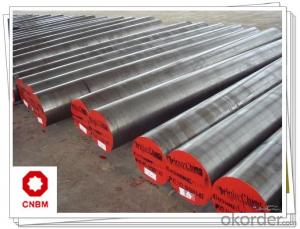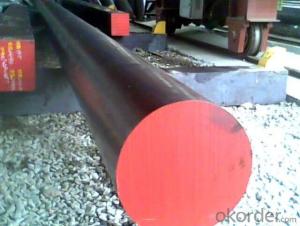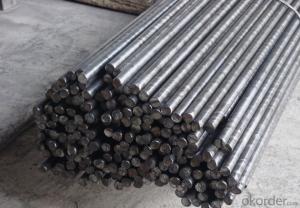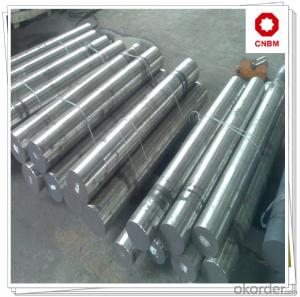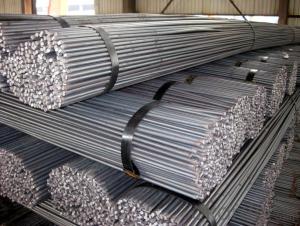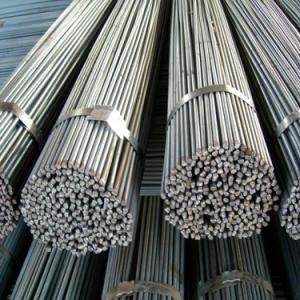Sea 9260 Spring Steel Bar
- Loading Port:
- Shanghai
- Payment Terms:
- TT OR LC
- Min Order Qty:
- 30 m.t.
- Supply Capability:
- 120000 m.t./month
OKorder Service Pledge
OKorder Financial Service
You Might Also Like
Sea 9260 Spring Steel Bar
Specification
1, Diameter: 8mm-250mm rounds
5mm-9mm rods
2, Length: 2m, 3m, 5.8m, 6m or customized
3, Standard: GB, ASTM, AISI, SAE, DIN, JIS, EN
OEM technology - send detailed technical parameters for accurate quotation.
2, Produce Process: smelt iron - EAF smelt billet - ESR smelt billet -
hot rolled or forged to get the steel round bar and plate
3, Heat Treatment: annealing, normalizing, tempering, quenching
4, Surface Treatment: Black, Polished, Galvanized
5, Quality Assurance: We accept third party inspection for all orders.
You can ask testing organizations such as SGS, BV, etc. to test our products before shipping.
Chemical Composition (%)
| C | Si | Mn | S | P | Cr | Ni | Cu |
| 0.52-0.60 | 1.50-2.00 | 0.60-0.90 | ≤0.035 | ≤0.035 | ≤0.35 | ≤0.35 | ≤0.20 |
Products Show
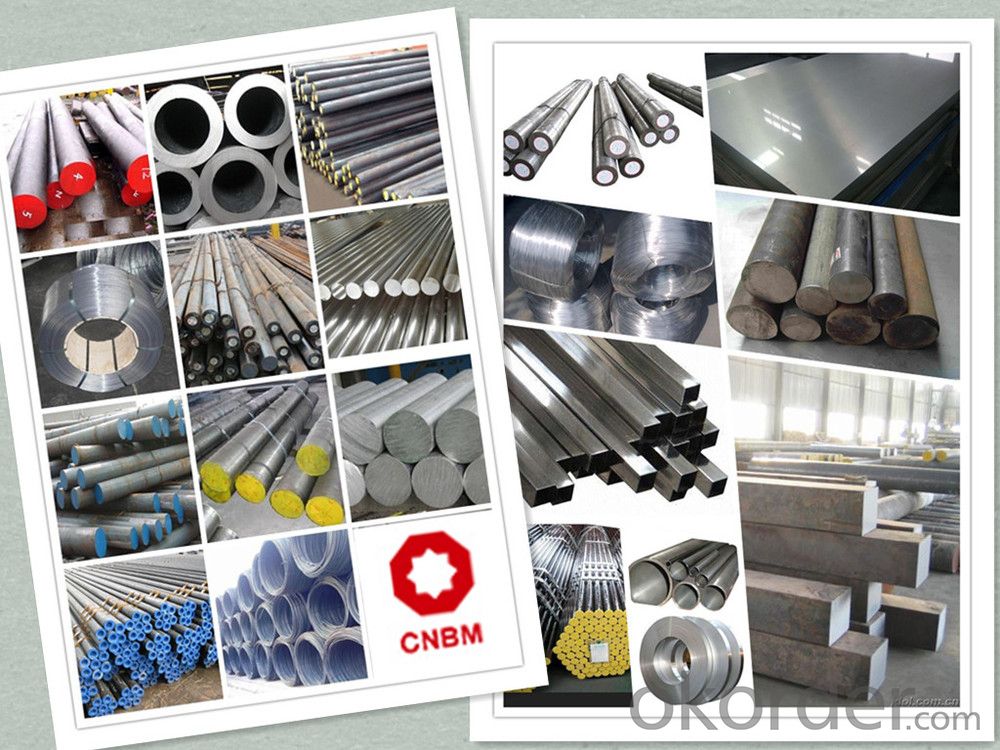
Product Overviews
| Product Name | Typical Grades | Diameter(mm) | Standard adopted |
| Carbon Steel | 20 (1020/S20C/C22) | Ø16-Ø300 |
GB/SAE/JIS/DIN
|
| 40 (1040/S40C/C40) | |||
| 45 (1045/S45C/C45) | |||
| Bearing Steel | GCr9 (51100/SUJ1) | Ø12-Ø250 | |
| GCr15 (52100/SUJ2/100Gr6) | |||
| GCr9SiMn (A485-Gr.1/SUJ3) | |||
Cr-Mo Steel | 20Cr (5120/SCr420H/20Cr4) | Ø12-Ø250 | |
| 40Cr (5140/SCr440/41Cr4) | |||
| 42CrMo(4140/SCM440/42CrMo4) | |||
| Gear Steel | 20CrNiMo | Ø16-Ø600 | |
| 20CrMn(5115/SMnC420/20MnCr5) | |||
| 20CrNiMo(8620/SNCM220/20CrMiMo2) |
Work Shop

Company Information
CNBM International Corporation is the most important trading platform of CNBM group.
Whith its advantages, CNBM International are mainly concentrate on Cement, Glass, Iron and Steel, Ceramics industries and devotes herself for supplying high qulity series of refractories as well as technical consultancies and logistics solutions.

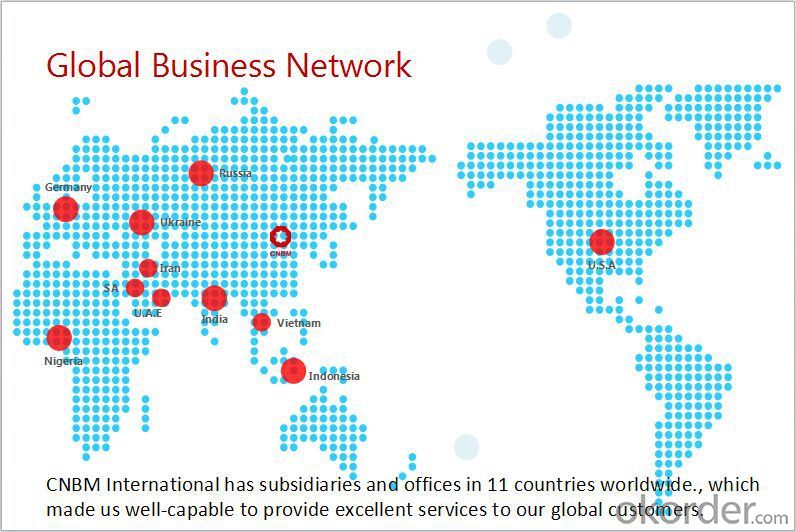
FAQ
1, Your advantages?
professional products inquiry, products knowledge train (for agents), smooth goods delivery, excellent customer solution proposale
2, Test & Certificate?
SGS test is available, customer inspection before shipping is welcome, third party inspection is no problem
3, Factory or Trading Company?
CNBM is a trading company but we have so many protocol factories and CNBM works as a trading department of these factories. Also CNBM is the holding company of many factories.
4, Payment Terms?
30% TT as deposit and 70% before delivery.
Irrevocable L/C at sight.
5, Trading Terms?
EXW, FOB, CIF, FFR, CNF
6, After-sale Service?
CNBM provides the services and support you need for every step of our cooperation. We're the business partner you can trust.
For any problem, please kindly contact us at any your convenient time.
We'll reply you in our first priority within 24 hours.
Packaging & Delivery
1, Packaging: seaworthy package or as required
2, Delivery: 35-45 days or based on quantity
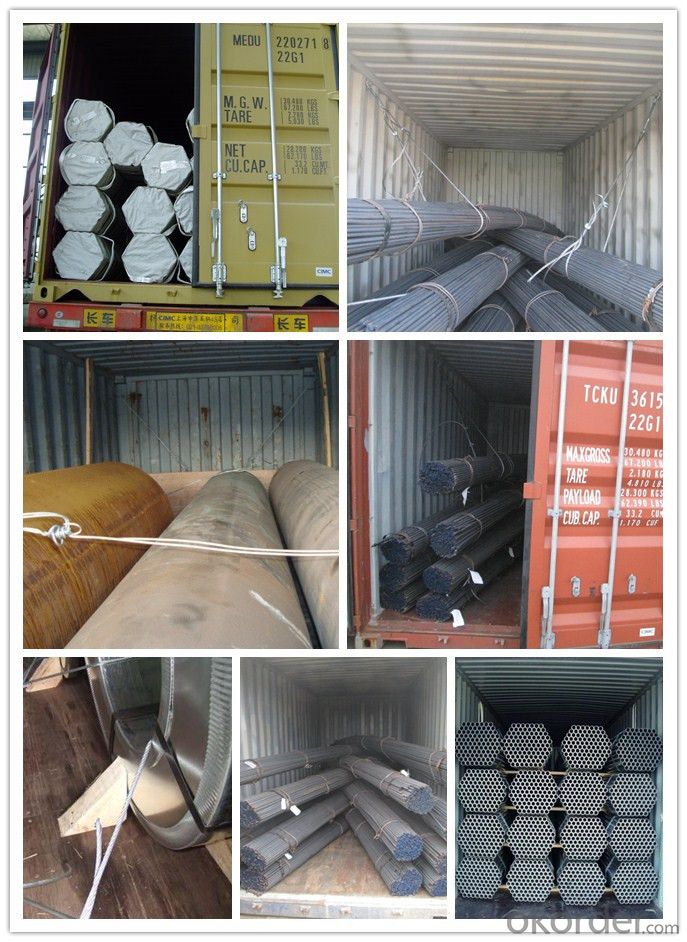
- Q:What are the different surface treatments available for tool steel round bars?
- There are several surface treatments available for tool steel round bars, which are used to enhance the performance, durability, and overall quality of the steel. Some of the common surface treatments for tool steel round bars include: 1. Nitriding: This process involves exposing the tool steel to a nitrogen-rich environment at high temperatures. It forms a hard surface layer that improves wear resistance and reduces friction. 2. Coating: Tool steel round bars can be coated with various materials such as titanium nitride (TiN), titanium carbonitride (TiCN), or chromium nitride (CrN). These coatings provide excellent resistance to wear, corrosion, and heat. 3. Black oxide: It is a chemical treatment that forms a black oxide layer on the surface of the tool steel. This treatment improves corrosion resistance and reduces the risk of rusting. 4. Heat treatment: Tool steel round bars can undergo heat treatment processes such as annealing, tempering, or quenching. These treatments help to improve the hardness, strength, and toughness of the steel. 5. Surface grinding: This process involves removing a thin layer of material from the surface of the tool steel. It helps to achieve a smooth and polished surface, enhancing the aesthetics and reducing the risk of surface defects. 6. Shot peening: It is a process where small metal or ceramic particles are propelled onto the surface of the tool steel at high velocity. This treatment induces compressive stress, improving the fatigue resistance and extending the lifespan of the steel. 7. Electropolishing: This treatment involves immersing the tool steel in an electrolyte bath and applying an electric current. It helps to remove surface imperfections, enhance the surface finish, and improve corrosion resistance. These surface treatments can be chosen based on the specific requirements and applications of the tool steel round bars. Each treatment offers unique benefits and can significantly enhance the performance and longevity of the tool steel.
- Q:What are the advantages of using copper-alloy steel round bars?
- There are several advantages of using copper-alloy steel round bars in various applications. Firstly, copper-alloy steel round bars offer excellent corrosion resistance. The presence of copper in the alloy helps to protect the steel from rust and corrosion, making it suitable for use in environments with high levels of moisture or chemicals. This corrosion resistance extends the lifespan of the round bars, reducing the need for frequent replacements and maintenance. Secondly, copper-alloy steel round bars have high thermal and electrical conductivity. The copper content in the alloy enhances these properties, making them ideal for applications that require efficient heat transfer or electrical conductivity. This makes them suitable for use in electrical components, heat exchangers, and other similar applications. Another advantage of copper-alloy steel round bars is their superior machinability. Copper has excellent machinability properties, which allows for easy cutting, drilling, and shaping of the round bars. This makes them easier to work with and reduces machining time and costs. Additionally, copper-alloy steel round bars offer good strength and toughness. The steel component in the alloy provides the necessary strength to withstand heavy loads and impacts, while the copper component enhances the toughness, making them resistant to cracking or breaking under stress. This makes them suitable for use in structural applications, where high strength and durability are required. Furthermore, copper-alloy steel round bars exhibit good thermal stability. They can withstand high temperatures without losing their mechanical properties, making them suitable for applications that involve exposure to extreme heat or thermal cycling. In conclusion, the advantages of using copper-alloy steel round bars include excellent corrosion resistance, high thermal and electrical conductivity, superior machinability, good strength and toughness, and high thermal stability. These properties make them a preferred choice in various industries, including construction, electrical, automotive, and manufacturing.
- Q:What is the Young's modulus of a steel round bar?
- The Young's modulus of a steel round bar is a measure of its stiffness or elasticity. It is a material property that determines how much a material deforms under a given load and is defined as the ratio of stress to strain. For steel, the Young's modulus typically ranges from 190 to 210 gigapascals (GPa). This means that for every unit of stress applied to the steel round bar, the strain experienced by the bar is approximately 190 to 210 times greater. The actual Young's modulus of a specific steel round bar may vary depending on various factors such as the specific grade of steel, its composition, and any heat treatment it has undergone. Therefore, it is important to consult the relevant material specifications or conduct specific testing to determine the exact Young's modulus for a particular steel round bar.
- Q:What is the maximum vanadium content allowed for steel round bars?
- The maximum vanadium content allowed for steel round bars varies depending on the specific steel grade and industry standards. However, in general, the maximum vanadium content is typically around 0.10-0.15%.
- Q:What are the different types of steel alloy compositions used for round bars?
- There are several different types of steel alloy compositions used for round bars, including carbon steel, stainless steel, tool steel, and alloy steel. Each type has its own unique properties and characteristics that make it suitable for specific applications.
- Q:What are the different types of steel round bar machining processes?
- There are several different types of steel round bar machining processes, each with its own unique characteristics and applications. Some of the most common types include: 1. Turning: This process involves rotating the steel round bar against a cutting tool, which removes material to create the desired shape. Turning is often used to create cylindrical shapes or to remove excess material from the surface. 2. Drilling: Drilling is a machining process that involves creating holes in the steel round bar using a rotating cutting tool. This process is commonly used to create holes for bolts or other fasteners. 3. Milling: Milling is a versatile machining process that involves removing material from the surface of the steel round bar using a rotating cutting tool. This process can be used to create complex shapes, slots, or grooves. 4. Grinding: Grinding is a machining process that uses an abrasive wheel to remove material from the surface of the steel round bar. This process is often used to achieve a smooth finish or to remove any imperfections on the surface. 5. Boring: Boring is a process that involves enlarging an existing hole in the steel round bar using a cutting tool. This process is commonly used to create larger diameter holes or to achieve greater precision. 6. Knurling: Knurling is a machining process that involves creating a pattern of ridges or grooves on the surface of the steel round bar. This process is often used to improve grip or to create a decorative effect. 7. Thread cutting: Thread cutting is a process that involves creating external or internal threads on the surface of the steel round bar. This process is commonly used to create threaded holes or to create threaded fasteners. These are just a few examples of the different types of steel round bar machining processes. Each process has its own advantages and limitations, and the choice of which process to use will depend on the specific requirements of the application.
- Q:What are the advantages of using nickel-copper alloy steel round bars?
- Nickel-copper alloy steel round bars offer several advantages. Firstly, their resistance to corrosion and oxidation is excellent, making them ideal for use in harsh environments like the marine or chemical industries. This ensures the longevity and durability of the bars, reducing the need for frequent replacements. Secondly, these round bars have outstanding mechanical properties. The addition of nickel and copper enhances their strength, toughness, and hardness, making them suitable for heavy-duty applications in construction, manufacturing, and engineering. They can withstand heavy loads and resist deformation or breakage, contributing to the overall safety and reliability of the structures or components they are used in. Another advantage is their excellent thermal stability. The alloy has a low coefficient of thermal expansion, allowing it to withstand high temperatures without significant dimensional changes. This is particularly important in applications involving extreme heat, such as in the aerospace or power generation industries. The thermal stability of the bars ensures their dimensional integrity, reducing the risk of warping or cracking under high-temperature conditions. Furthermore, Nickel-copper alloy steel round bars offer good electrical conductivity. This is beneficial in applications that require the transmission of electric current, such as electrical wiring or power distribution systems. The high electrical conductivity of the alloy ensures efficient and reliable electrical connections, minimizing power loss and maximizing performance. In conclusion, the advantages of nickel-copper alloy steel round bars include excellent corrosion resistance, superior mechanical properties, thermal stability, and good electrical conductivity. These characteristics make them suitable for a wide range of applications in various industries, providing durability, strength, and reliability.
- Q:What is the difference between hot rolled and cold drawn steel round bars?
- Hot rolled steel round bars are produced by heating a steel billet or ingot at a high temperature and then rolling it into the desired shape. This process results in a rougher surface finish and a larger diameter tolerance compared to cold drawn steel round bars. Hot rolled bars are commonly used in applications where strength and durability are important, such as in construction and manufacturing. On the other hand, cold drawn steel round bars are produced by pulling a hot rolled bar through a die at room temperature, which results in a smoother surface finish and tighter diameter tolerances. This process also improves the mechanical properties of the steel, such as its strength and hardness. Cold drawn bars are often used in applications where precision and a high-quality surface finish are required, such as in the production of shafts, bolts, and precision components. In summary, the main differences between hot rolled and cold drawn steel round bars are the surface finish, diameter tolerance, and mechanical properties. Hot rolled bars have a rougher surface finish, larger diameter tolerances, and are typically used in applications where strength and durability are important. Cold drawn bars have a smoother surface finish, tighter diameter tolerances, and are commonly used in applications where precision and a high-quality surface finish are required.
- Q:Can steel round bars be used for making exhaust systems?
- Indeed, exhaust systems can be fabricated using steel round bars. Steel, being renowned for its endurance, resistance to heat, and capacity to endure extreme temperatures and harsh surroundings, is widely favored as a material for exhaust systems. By utilizing steel round bars, one can fashion the pipes, mufflers, and other constituents of an exhaust system. Moreover, these bars can be readily welded and molded into the preferred shape, enabling customization and design flexibility. Furthermore, steel round bars can furnish the essential strength and structural soundness imperative for an effective and enduring exhaust system.
- Q:What are the advantages of using high-temperature steel round bars?
- Using high-temperature steel round bars in various applications has several advantages. Firstly, these bars possess excellent heat resistance properties, enabling them to withstand elevated temperatures without compromising their structural integrity. This makes them ideal for industries like aerospace, automotive, and power generation, where components are exposed to extreme heat conditions. Another advantage of high-temperature steel round bars is their superior strength and durability. They are designed to withstand high mechanical stresses, making them suitable for applications requiring heavy loads or intense pressure. Additionally, their high strength-to-weight ratio allows for lighter and more efficient designs, reducing overall material and production costs. Furthermore, high-temperature steel round bars exhibit excellent corrosion resistance properties. They can withstand exposure to harsh environments, including chemicals, moisture, and saltwater, without significant degradation. This makes them suitable for industries like marine, chemical, and oil and gas where corrosion resistance is crucial. Moreover, high-temperature steel round bars offer excellent dimensional stability, maintaining their shape and size even under extreme temperature fluctuations. This property is highly advantageous in applications where precision and accuracy are essential, such as machining and tooling. Lastly, high-temperature steel round bars are readily available in various sizes, grades, and finishes, allowing for flexibility and customization to meet specific project requirements. This versatility makes them suitable for a wide range of applications, ensuring that there is a suitable option for every project, regardless of complexity or industry. In conclusion, high-temperature steel round bars provide superior heat resistance, strength, durability, corrosion resistance, dimensional stability, and versatility. These properties make them an excellent choice for various industries and applications, guaranteeing reliable and long-lasting performance in demanding environments.
1. Manufacturer Overview |
|
|---|---|
| Location | |
| Year Established | |
| Annual Output Value | |
| Main Markets | |
| Company Certifications | |
2. Manufacturer Certificates |
|
|---|---|
| a) Certification Name | |
| Range | |
| Reference | |
| Validity Period | |
3. Manufacturer Capability |
|
|---|---|
| a)Trade Capacity | |
| Nearest Port | |
| Export Percentage | |
| No.of Employees in Trade Department | |
| Language Spoken: | |
| b)Factory Information | |
| Factory Size: | |
| No. of Production Lines | |
| Contract Manufacturing | |
| Product Price Range | |
Send your message to us
Sea 9260 Spring Steel Bar
- Loading Port:
- Shanghai
- Payment Terms:
- TT OR LC
- Min Order Qty:
- 30 m.t.
- Supply Capability:
- 120000 m.t./month
OKorder Service Pledge
OKorder Financial Service
Similar products
New products
Hot products
Hot Searches
Related keywords
